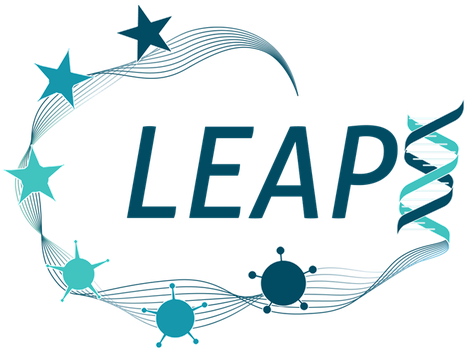Research Objectives
Objectives

Develop and leverage genomic technologies to optimize pathogen surveillance and diagnostic development to detect pathogens in animals, humans and their environments, aligning with the Global Genomic Surveillance Strategy.

Enhance collaborations among EU national health authorities to create an interconnected system.

Enhance the precision and timeliness of epidemiologic modelling at various governance levels, employing a One Health genomic surveillance approach, to better understand pathogen behavior.

Establish a dynamic health emergency threat assessment process and initiate robust governance mechanisms across the EU.

Create protocols and models for the swift availability and accessibility of medical countermeasures to healthcare providers. This would contribute to improving pandemic response.

Offer model-based policy support for managing potential epidemic scenarios posed by disease X. This would contribute to preventing pathogens with epidemic potential from turning into large-scale epidemics/pandemics.

Maintain active engagement with the medical, scientific, and policy communities to foster relevant knowledge exchange and address unmet needs through LEAPS initiatives.
LEAPS
Advancing Health Security
LEAPS is an EU-funded Horizon Europe project spanning over four years. The project is at the forefront of enhancing global health security by focusing on the advancement of genomic surveillance, the efficient development of countermeasures (CMs), and the provision of policy-support tools aimed at combating pathogens with epidemic and pandemic potential.
The research will focus on studying three pathogens over the four years:
The selection of SARS-CO2 and Avian Influenza, two respiratory viruses, is based on West Nile virus (WNV) is due to the increasing concern over mosquito-borne outbreaks in Europe, driven by climate change’s effects. Our Greek partners, facing yearly epidemics, exemplifies the urgency. LEAPS adopts a proactive stance to enhance preparedness across the EU, especially in areas prone to WNV.
Designed to be adaptable, LEAPS can swiftly shift focus to emergent threats—referred to as “pathogen X”—in the face of an epidemic or pandemic, showcasing a commitment to immediate public health readiness against global health challenges.
Aiming high
The exacerbating factors of disease emergence and spread include climate change and urbanization.
The readiness for pathogen X demonstrates flexibility in our approach to detect and prepare for unforeseen health threats.
The resilience of health systems its data infrastructure and its capacity for collaborative action.
Driving Change with LEAPS
Inter-connected network
LEAPS is dedicated to prove the value and feasibility of creating a cohesive and inter-connected network of European national health institutions to better prepare and respond to emergencies such as future pandemics.
Learning experiences
It aims to develop and demonstrate a proof of concept based on the research’s learning experiences of five countries, keeping it flexible to adaptation needs during change.
The goal
The end goal is to provide decision-making support to the EU’s health emergency preparedness/response strategy.
New standards
This scientifically informed approach to pandemic preparedness can profoundly improve our global capacity to anticipate, avert, and manage health crises. By developing and applying innovative models and frameworks, we establish new standards, positioning the EU at the forefront of emergency preparedness and response.


